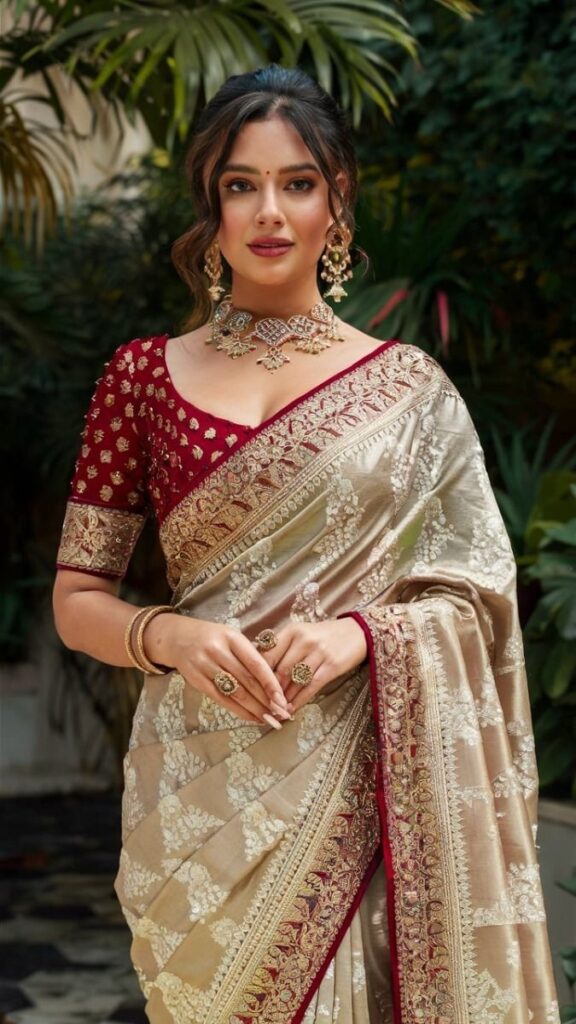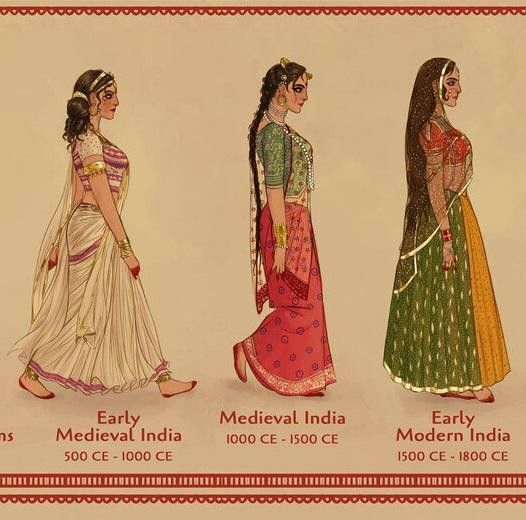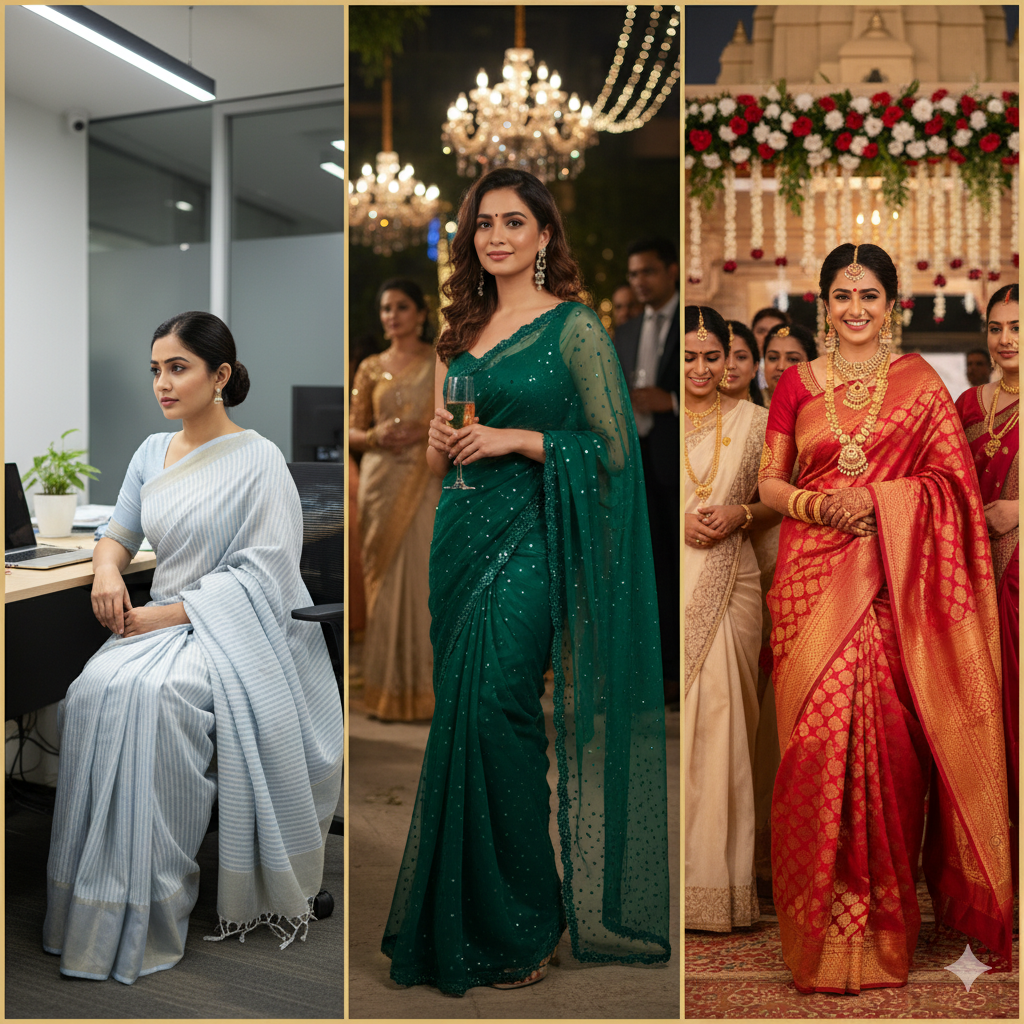When we talk about ethnic wear in India, sarees are often the first outfit that comes to mind. Unlike many fashion trends that come and go, the saree has been a constant companion to Indian women for centuries. It is an expression of grace, culture, and timeless beauty. Every pleat tells a story, every border carries heritage, and every drape reflects individuality. No matter how modern our wardrobes become, a saree continues to hold an irreplaceable place.

A Journey Through History
The saree is one of the world’s oldest surviving forms of clothing, with roots dating back more than 5,000 years. References to sarees can be found in ancient scriptures, paintings, and temple carvings. While its origins are deeply tied to tradition, the saree has never been stagnant. Over the centuries, it has evolved with changing times, regions, and preferences. From the opulent Banarasi sarees of Varanasi to the silk-rich Kanjeevarams of Tamil Nadu, from the delicate Chanderis of Madhya Pradesh to the breezy georgettes of today’s modern collections sarees have embraced diversity like no other outfit.

This adaptability is what makes them so timeless. They blend history and fashion, culture and comfort, tradition and experimentation.
Versatility for Every Occasion

One of the most appealing qualities of sarees is their unmatched versatility. You can wear a saree to a grand wedding, a festive puja, a corporate meeting, or even a casual dinner. It all depends on the choice of fabric, drape, and accessories.
- A heavy silk saree exudes luxury and is perfect for wedding ceremonies.
- A light cotton saree keeps you cool in the summer while offering subtle elegance.
- A chiffon or georgette saree gives a modern, effortless look for parties and evening gatherings.
- Linen sarees are now a favorite for professionals who love elegance with comfort.
A Symbol of Femininity and Power
A saree is often seen as a symbol of grace and femininity, but it is also a symbol of confidence and power. Women across different walks of life politicians, corporate leaders, teachers, actresses, and homemakers carry sarees with pride. Draping a saree connects you with your cultural roots while simultaneously projecting authority.
Why Every Wardrobe Needs One
If you are building an ethnic collection, a saree is a must-have. Here’s why:
- Timeless fashion: Sarees never go out of style. They are as relevant today as they were centuries ago.
- Cultural connection: Owning a saree keeps you rooted in your traditions while still allowing you to experiment with modern designs.
- Investment piece: High-quality sarees, especially silk ones, can be passed down for generations, becoming family heirlooms.
- Endless styling possibilities: From the classic Nivi drape to Bengali, Gujarati, Maharashtrian, or even experimental fusion drapes, a saree offers limitless styling options.
Styling Touches That Elevate Sarees
Although this blog focuses more on sarees as an essential wardrobe piece rather than styling a saree, a few touches can’t be ignored:
- Pair a silk saree with temple jewelry for a majestic wedding look.
- Choose pastel chiffon sarees with minimal pearl accessories for brunches or semi-formal events.
- Experiment with statement blouses cold-shoulder, halter-neck, or embroidered to give your saree a modern twist.
- Add a belt to your saree for a fusion Indo-western style.
A saree is more than six yards of fabric it is an identity, a tradition, and an heirloom. It adapts to every occasion, reflects confidence, and never loses relevance. Whether it’s your first saree or your fiftieth, each one adds richness and depth to your wardrobe.
Sarees are not just attire; they are woven with stories of heritage, artistry, and timeless traditions. Each region of India takes pride in its own weave—Banarasi sarees known for royal zari work, Kanjeevaram silks that symbolize prosperity, Bengal’s soft Tant sarees perfect for everyday wear, and Assam’s golden Muga silks which are rare and precious. This variety ensures that no matter where you belong, there is always a saree that represents your culture.
At the same time, sarees have found a way to stay modern. Designers today experiment with fusion drapes, ready-to-wear concepts, and even Indo-western blouse pairings. This has made sarees more accessible to younger generations who want convenience without losing tradition. Interestingly, sarees are also becoming a symbol of sustainable fashion. Unlike fast fashion trends that last a few months, a saree can be worn for decades, passed down through generations, and even upcycled into lehengas, salwar suits, or dupattas. Owning a saree is like owning a piece of history that evolves with you.
